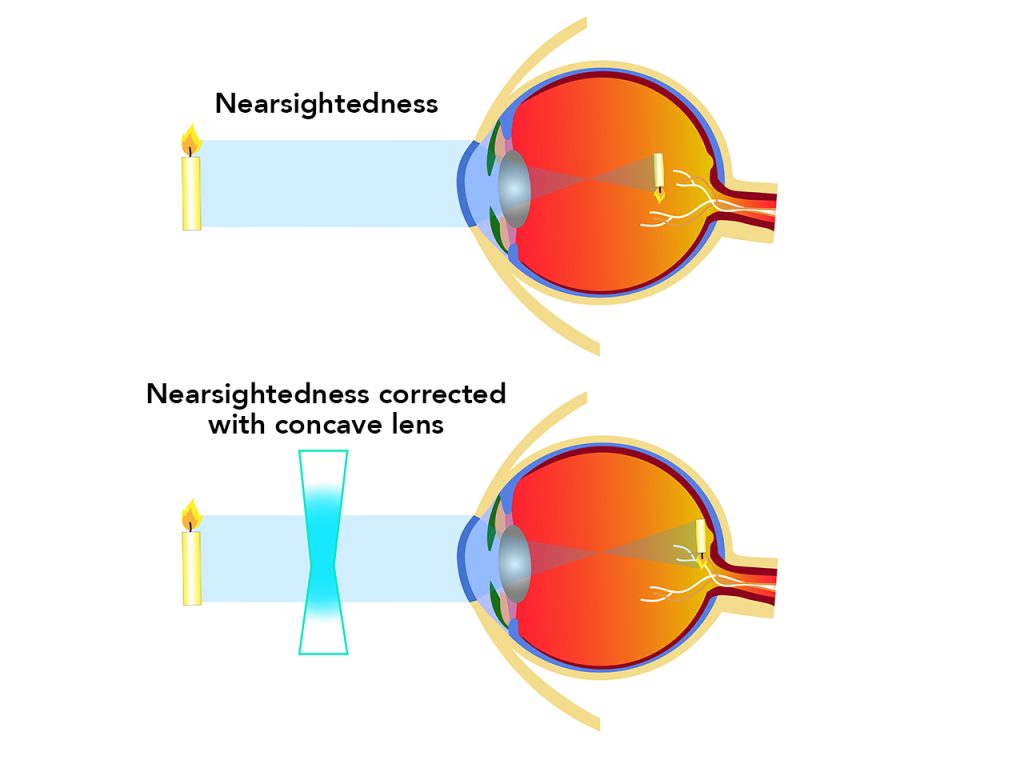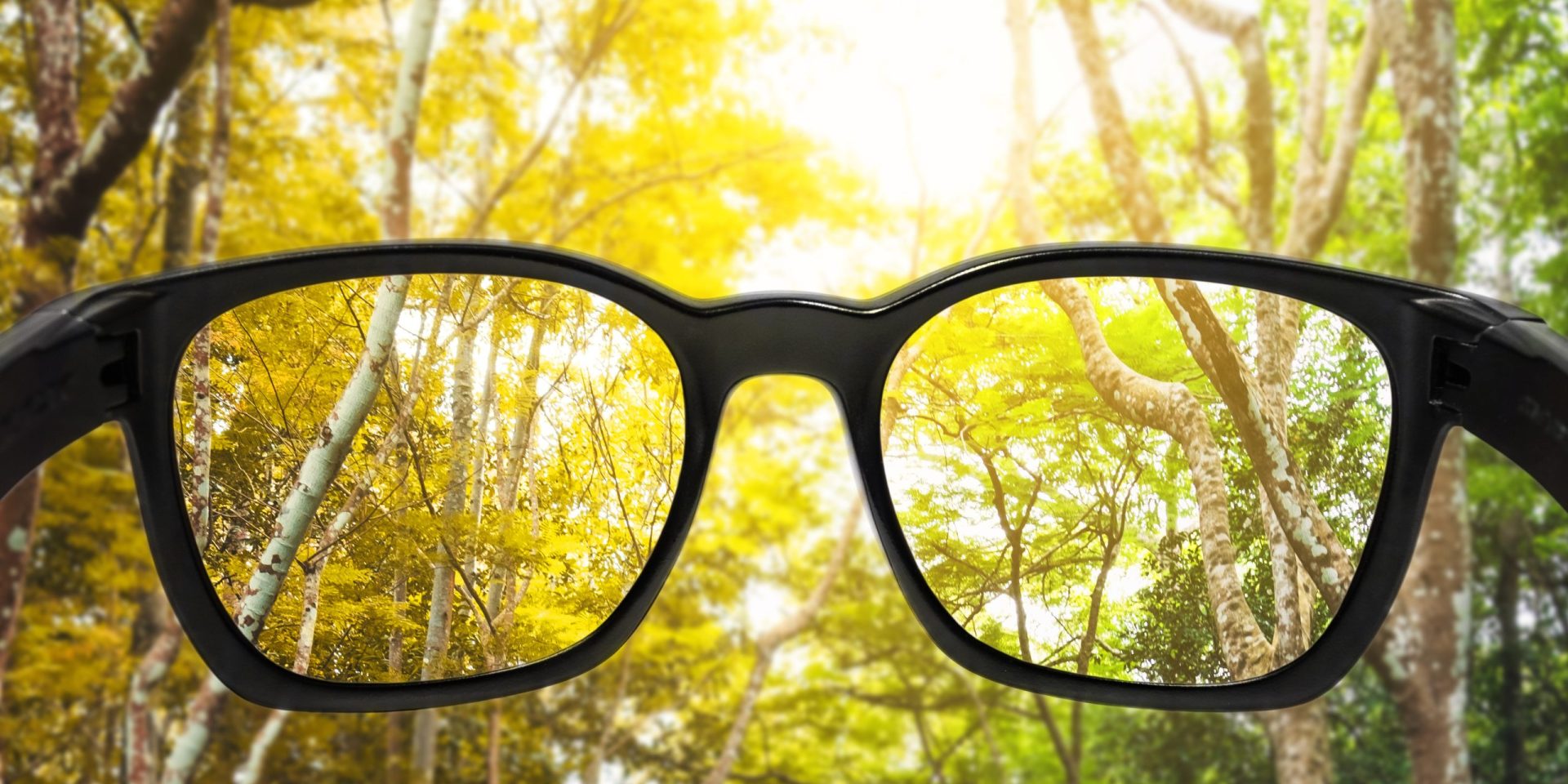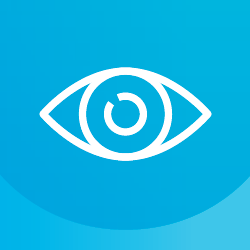At Modern Vision Solutions, we are dedicated to improving your visual perception and addressing visual impairments through the latest in optometry and ophthalmology. Understanding the human eye and its complexities, including conditions like myopia (nearsightedness), astigmatism, and hyperopia (far-sightedness) is at the core of our mission to provide effective eye care. We understand that clear vision is essential for a high quality of life and that nearsightedness affects many of our patients, blurring distant objects and impacting daily activities. We focus on providing innovative and effective solutions to this common vision problem. This article will explore how glasses work to sharpen your vision, allowing you to see the world with clarity and confidence.
How do glasses correct nearsightedness?
Corrective lenses, including both eye glasses and contact lenses, offer a simple yet effective solution for myopia by utilizing concave lenses that alter the curvature and refraction of incoming light. This optics principle ensures light properly focuses on the retina, enhancing visual acuity. For those with additional conditions like astigmatism or presbyopia, multifocal lenses, including progressive lenses and bifocals, are available to address multiple refractive errors simultaneously.
 Glasses offer a simple yet effective solution for nearsightedness by utilizing concave lenses that gently diverge the light rays as they enter the eye. This helps adjust where the light focuses inside the eye, ensuring it hits the retina—the key to seeing clearly. When someone is nearsighted, it’s often because their eyeball is slightly too long or the cornea and lens bend light too much, making distant objects appear blurry while things up close remain sharp and clear.
Glasses offer a simple yet effective solution for nearsightedness by utilizing concave lenses that gently diverge the light rays as they enter the eye. This helps adjust where the light focuses inside the eye, ensuring it hits the retina—the key to seeing clearly. When someone is nearsighted, it’s often because their eyeball is slightly too long or the cornea and lens bend light too much, making distant objects appear blurry while things up close remain sharp and clear.
Concave lenses, often called “minus lenses,” have a unique shape: thinner in the middle and thicker at the edges. Picture them as two prisms meeting at their slimmest points, pushing light outward toward the lens’s edges. This action corrects the myopic tendency of light to converge too soon before reaching the retina. By redirecting the light to focus at the back of the eye, right on the retina, concave lenses tackle the issue of blurry distance vision head-on.
The strength of the lenses, marked by negative diopters, signifies their ability to diverge light. The exact power needed is customized to each individual, based on how far they can see clearly without any help. Essentially, the lens presents distant scenes to the nearsighted eye in a way it can understand, bringing everything into sharp focus.
In a nutshell, glasses fitted with concave lenses are a cornerstone for correcting nearsightedness. They ensure that light rays extend correctly inside the eye, focusing on the retina and transforming how distant objects are viewed—clearly and sharply.
What is the difference between a concave and a convex lens?
Convex lenses are key for focusing and magnification, while concave lenses are crucial for correcting nearsightedness and dispersing light. Convex lenses, with their outward bulge, converge light rays to a focal point, making them ideal for magnifying visuals and correcting farsightedness. They’re widely used in devices like magnifying glasses, cameras, and telescopes. On the other hand, concave lenses, which curve inward, diverge light rays, effectively correcting nearsightedness by spreading light and creating virtual images. These lenses are essential in eyeglasses for myopia and in instruments that require the dispersion of light. The focal length of convex lenses is positive, aligning with their converging function, whereas concave lenses have a negative focal length, indicative of their diverging nature.
What causes nearsightedness?
Nearsightedness, or myopia, is a condition where close objects appear clear but distant objects are blurry due to light rays focusing in front of the retina instead of directly on it. Myopia can primarily be categorized into two types: axial myopia, which is more common and results from the elongation of the eyeball, making the axial length from the cornea to the back of the eye too long; and refractive myopia, which is less common and occurs when the cornea is too steeply curved or the lens is too thick or too close to the cornea, leading to excessive focusing power.
Apart from these physical causes, environmental factors and lifestyle choices also play a significant role in the development of myopia. Night myopia, for instance, emerges in low light conditions that hinder proper focus, coupled with the dilatation of pupils which allows unfocused light rays to enter the eye. Pseudo myopia arises from the excessive use of the eye’s focusing mechanism due to prolonged near-vision tasks, leading to temporary blurred distance vision that may become permanent with continuous visual stress. Myopia can also signal other health issues, such as diabetes-induced variations in blood sugar levels or the onset of cataracts.
The root cause of myopia remains elusive, though genetics and environmental stressors are believed to contribute significantly. Engaging in extensive close work, like reading or screen time, especially with mobile and computer screens, has been associated with increased myopia risk. Studies suggest a 30% rise in myopia risk with mobile device use alone, which escalates to 80% with the inclusion of computer use. Risk factors enhancing the likelihood of developing myopia include a family history of the condition, excessive close-up work, insufficient outdoor activity, an overabundance of screen time, and diabetes. At Modern Vision Solutions, understanding these factors is crucial for diagnosing and addressing myopia effectively, ensuring our clients can achieve the best possible vision correction.
Clear Vision Ahead: Understanding and Correcting Nearsightedness
In the journey towards clear vision, understanding nearsightedness and the corrective power of glasses is crucial. At Modern Vision Solutions, we’re committed to guiding you through the maze of options available for vision correction, ensuring that you can navigate your world with clarity and confidence. Glasses equipped with concave lenses stand out as a primary tool in our arsenal, offering a tailored solution that brings the world into focus for those affected by myopia.
Whether you’re experiencing the common signs of nearsightedness or are curious about the best ways to correct it, we’re here to support your vision health. We invite you to reach out to our team at Modern Vision Solutions to schedule a comprehensive eye examination. Our team is ready to assess your vision, discuss your lifestyle, and recommend the best corrective measures customized for your needs. Don’t let nearsightedness blur your view of the world. With the right support and corrective eyewear solutions, clear and sharp vision is within your reach. Join us in taking the first step towards a brighter, clearer future.
More FAQ’s About How Do Glasses Correct Nearsightedness?
What is the difference between glasses for nearsightedness and farsightedness?
Glasses for nearsightedness use concave lenses to diverge light rays, correcting the focus so it lands on the retina, enabling clear distance vision. Conversely, glasses for farsightedness use convex lenses to converge light rays, adjusting the focus for near objects. Each type addresses specific refractive errors, ensuring optimal vision correction tailored to individual needs.
How do I know if I need glasses for nearsightedness?
If distant objects appear blurry, but you can see close ones clearly, it’s likely you’re experiencing nearsightedness. At Modern Vision Solutions, we recommend a comprehensive eye examination to accurately diagnose your vision and determine if you need glasses. Our expert team uses the latest technology to assess your vision and provide personalized solutions.
Can glasses fully correct nearsightedness?
Yes, glasses can fully correct nearsightedness by adjusting the focus of light directly onto your retina, thereby restoring clear distance vision. At Modern Vision Solutions, we ensure that your glasses are precisely tailored to your eyeglass prescription, offering you the clearest vision possible. Regular eye exams are essential to adjust your lenses as needed.
How often should I replace my glasses for nearsightedness?
At Modern Vision Solutions, we recommend updating your glasses as your prescription changes or at least every two years to ensure optimal vision correction. However, if you notice changes in your vision or if your glasses become damaged, it’s important to schedule an appointment for an evaluation and potential update.
Do glasses for nearsightedness need special coatings?
Special coatings, such as anti-reflective, UV protection, and scratch-resistant coatings, can enhance the durability and performance of your glasses. Modern Vision Solutions advises on the best coatings based on your lifestyle, ensuring your glasses not only correct your nearsightedness but also offer additional protection and clarity.
Can wearing glasses for nearsightedness make my eyes worse?
There’s a common misconception that wearing glasses can worsen your vision. At Modern Vision Solutions, we want our patients to know that glasses correct the focus of light onto your retina, improving vision and quality of life. Glasses do not worsen your eyesight; rather, they are a tool to correct refractive errors effectively.
How do I choose the best frame for my nearsighted glasses?
Choosing the right frame involves considering your face shape, lifestyle, and personal style. Our team at Modern Vision Solutions offers personalized consultations to help you select frames that not only suit your aesthetic preferences but also comfortably fit your face and accommodate your lens prescription.
Are there exercises to reduce my dependence on glasses for nearsightedness?
While certain eye exercises are touted to improve vision, there is limited scientific evidence supporting their effectiveness in significantly reducing dependence on glasses for nearsightedness. At Modern Vision Solutions, we focus on providing proven solutions like glasses and recommend regular eye exams to monitor and manage your vision health.
Are there any alternatives to glasses to correct nearsightedness?
Yes, at Modern Vision Solutions, we offer several alternatives to glasses for correcting nearsightedness. Options include contact lenses, which are available for daily or extended wear, orthokeratology (a non-surgical procedure that temporarily reshapes the cornea overnight), and refractive surgeries such as LASIK and refractive lens exchange. These alternatives provide flexibility and convenience for those seeking solutions beyond traditional glasses. Our expert team is here to guide you through each option to find the best solution for your vision needs and lifestyle.
Can children outgrow the need for glasses for nearsightedness?
Some children may experience changes in their vision as they grow, potentially reducing their dependence on glasses. However, at Modern Vision Solutions, we stress the importance of regular eye exams for children to monitor their vision and adjust their prescription as needed, ensuring they always have the clearest vision possible during their developmental years.
Can Contact Lenses Be an Alternative to Glasses for Nearsightedness?
Yes, contact lenses offer a highly effective alternative to glasses for those with nearsightedness. At Modern Vision Solutions, we provide a range of contact lens options, including those made from advanced materials such as polycarbonate. These materials are chosen for their exceptional durability and clarity, ensuring that wearers experience comfortable, clear vision throughout their day. Contact lenses provide a wider field of view and eliminate the physical restrictions and reflections sometimes associated with glasses. They fit your lifestyle seamlessly, whether you’re engaged in sports, outdoor activities, or simply prefer the aesthetic. Our team can help you decide if contact lenses are suitable for your vision needs and lifestyle preferences.
Is it better to wear glasses all the time for nearsightedness or only when needed?
The decision to wear glasses full-time or only for specific activities depends on the severity of your near-sightedness and your lifestyle. At Modern Vision Solutions, we provide tailored advice based on your specific vision needs, ensuring your glasses support your daily activities and overall quality of life without compromise.











